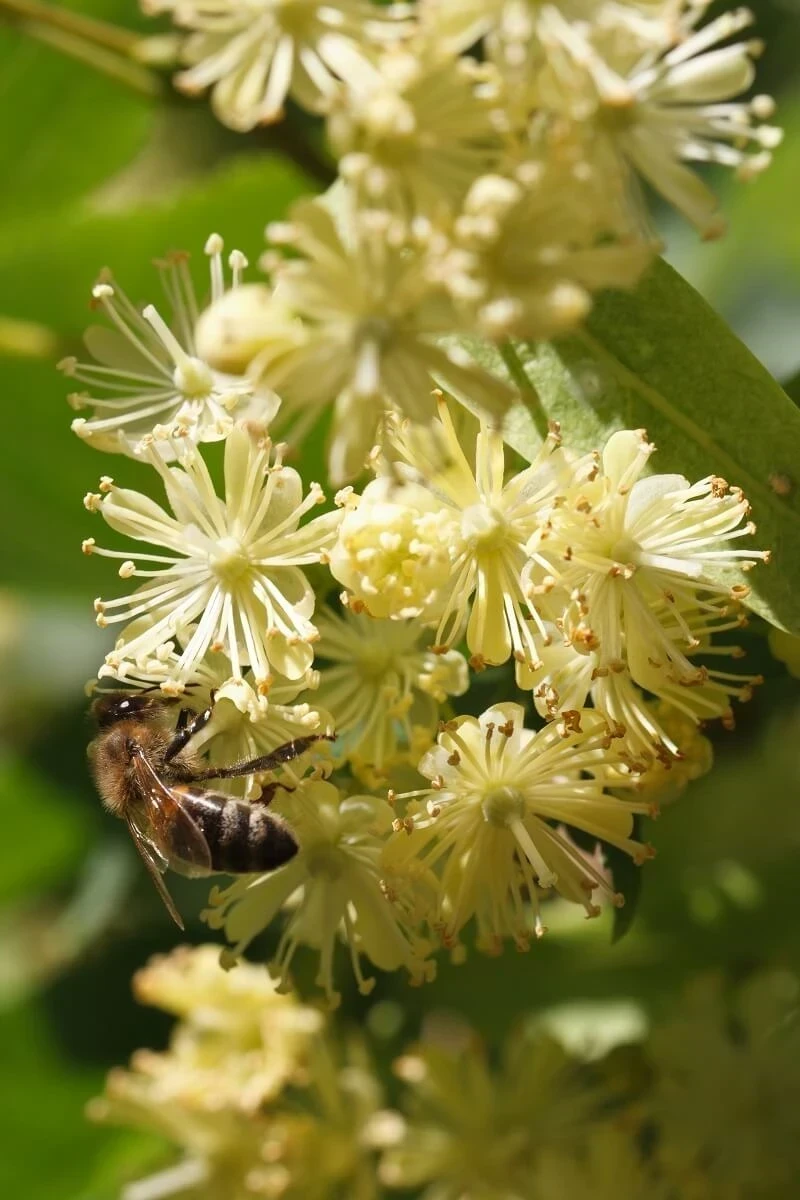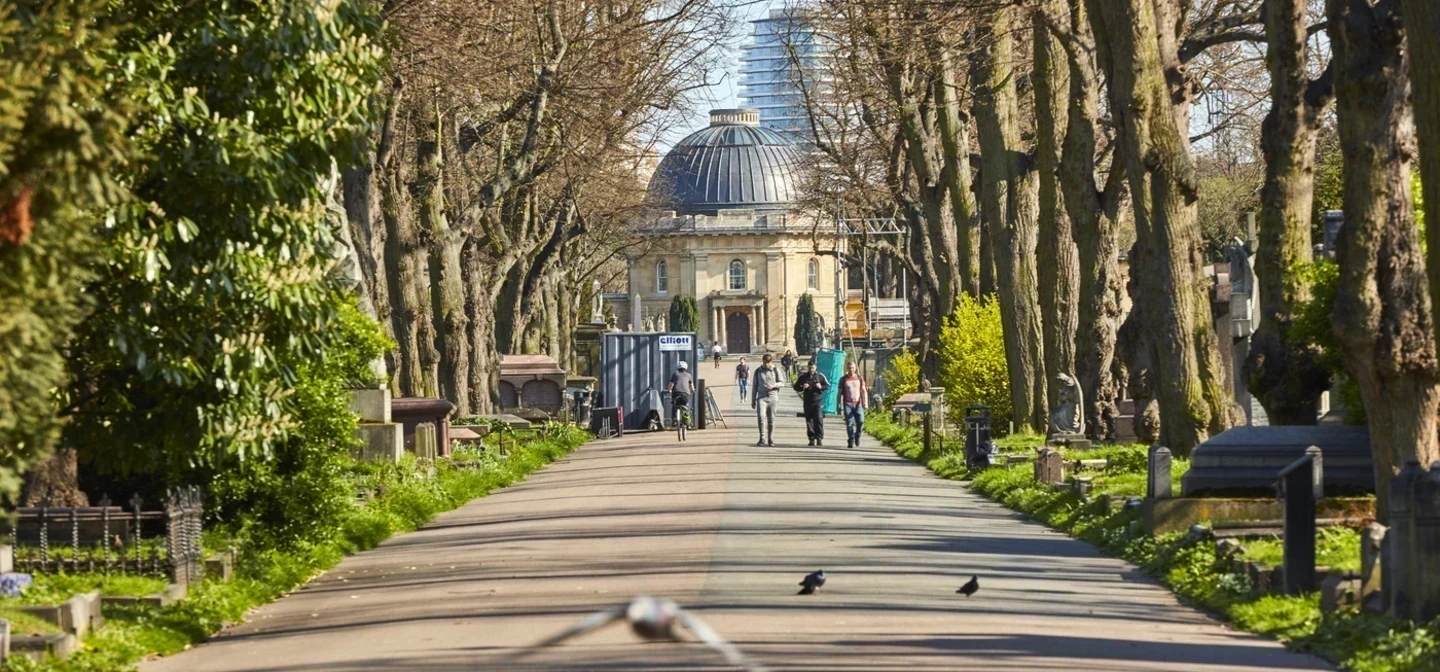
The Central Avenue (1840)
The tree-lined ceremonial drive that runs through the heart of the cemetery.
The birth of Brompton cemetery in 1840
Brompton Cemetery began as a private business in 1840. To be successful it had to be the preferred last resting place for potential customers. The challenge for the project architect, Benjamin Baud, was to make the long flat site more interesting and appealing.
Baud took his inspiration from the symmetrical layout of the world’s great cathedrals. He created a tree-lined avenue through the middle of the cemetery, like the aisle or ‘nave’ of a vast open-air church. This led from the arched main entrance, through the colonnades at the ‘crossing’, to reach the domed chapel at the ‘high altar’.
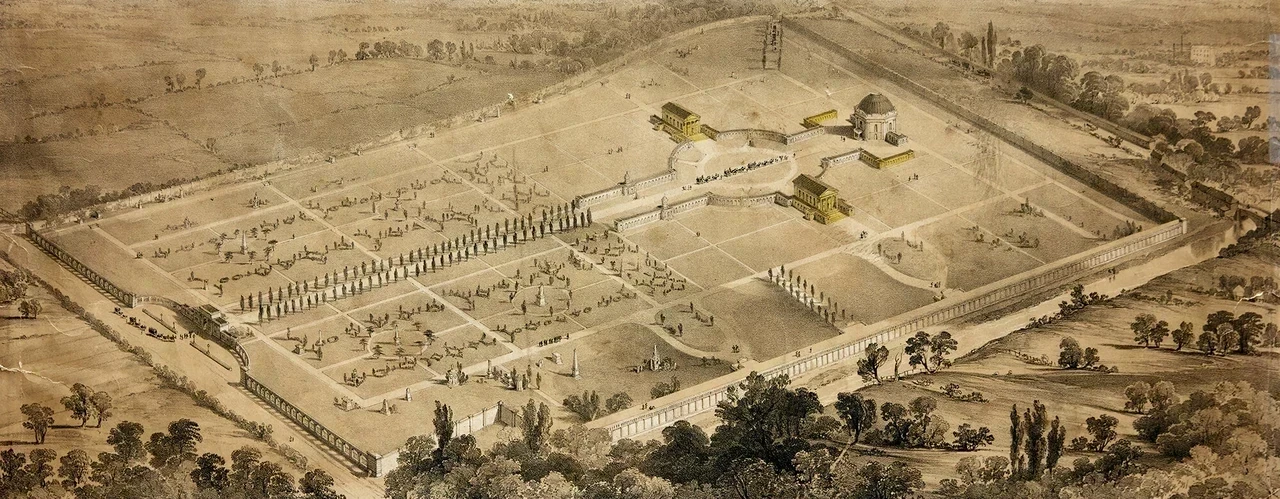
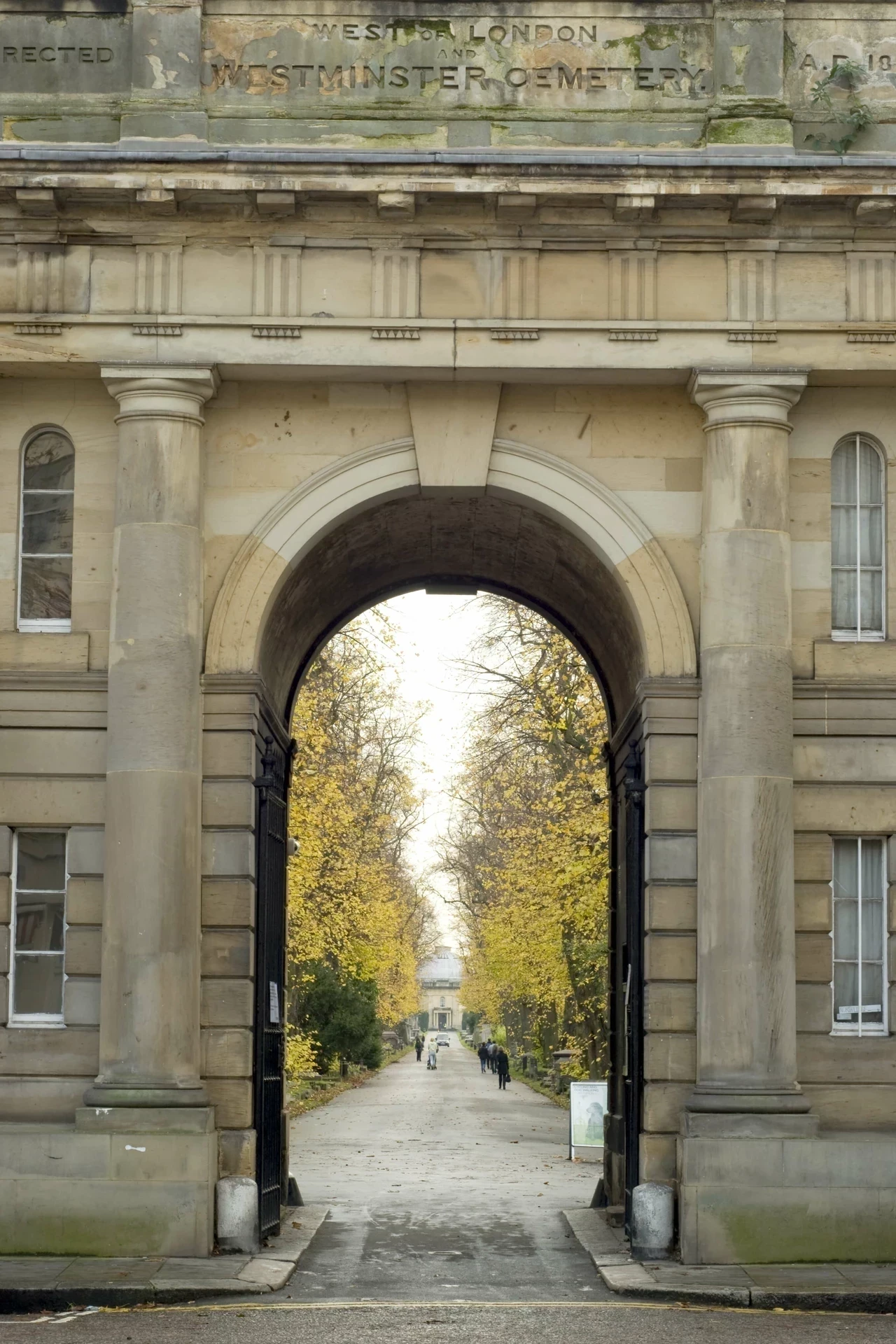
The Central Avenue
The Central Avenue remains an impressive feature, leading the eye to the distant chapel. It’s over 2,000 feet (600 metres) long, and is lined with a row of stately lime trees.
The limes were grown in the cemetery’s own nursery, which stood in the south west corner of the site. We thought the trees lining the Avenue today were too small to be the original ones, planted in 1846. However, when one blew down in a storm, we were able to count the rings and prove that it really was nearly 200 years old.
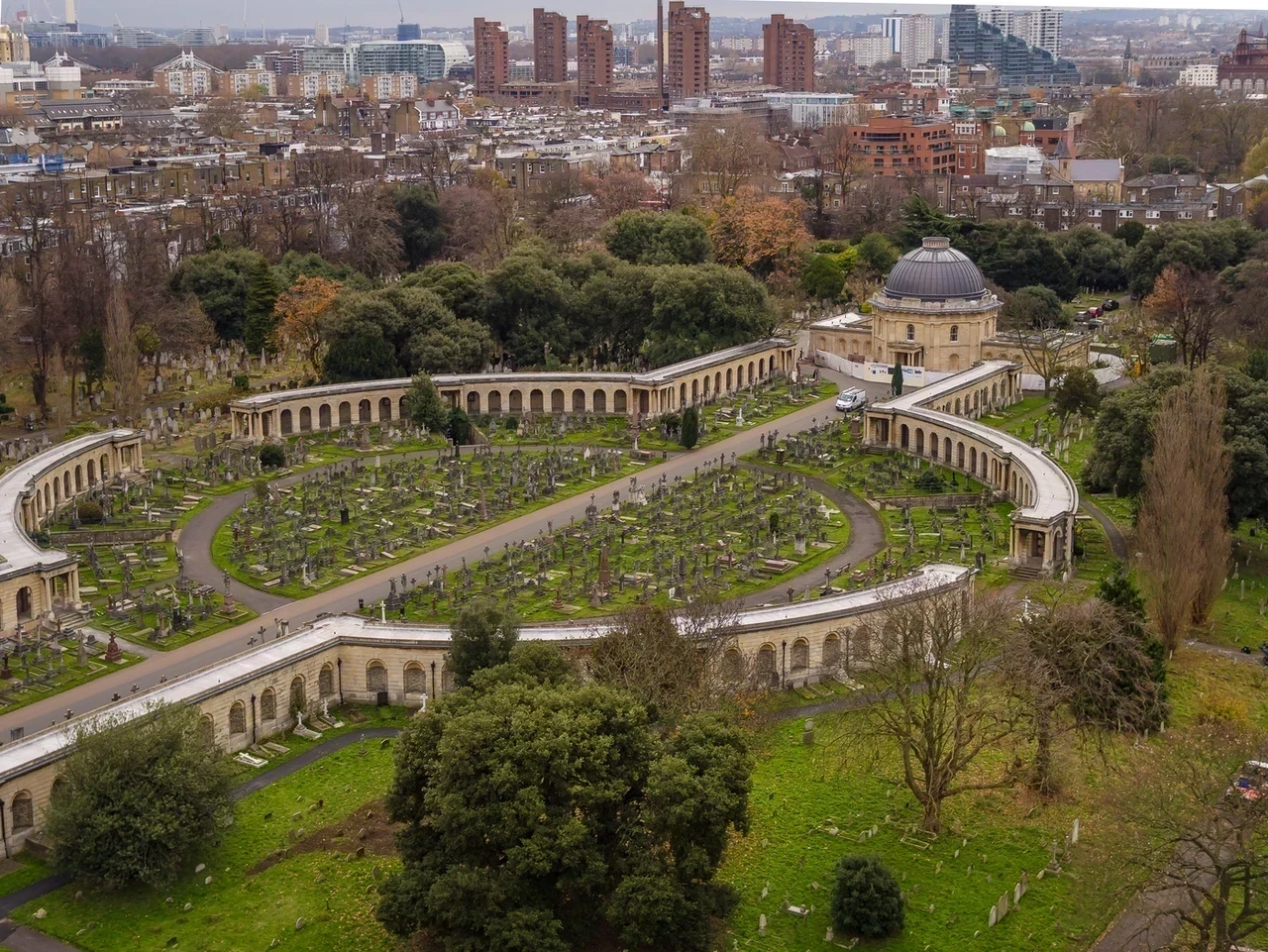
The Avenue's Lime trees
The Avenue’s lime trees aren’t just an elegant design feature. They also provide important homes and food for some of the cemetery’s wildlife. Birds roost and nest in their branches.
Many moth caterpillars eat the leaves, and bees feed on the fragrant flowers. Tiny pipistrelle bats also hunt for insects around the limes at dusk.
